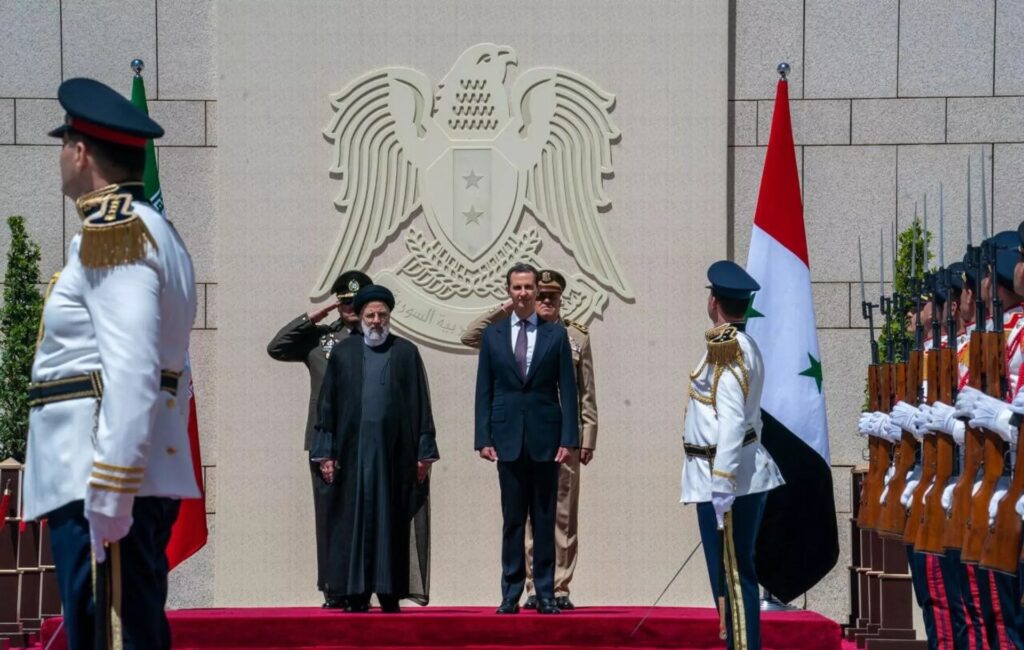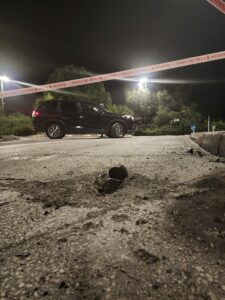At the time of this writing (May 3), Iranian President Ibrahim Raisi landed at Damascus International Airport. This is the first visit by an Iranian president to Syria since 2011. The visit is scheduled to last for two days. A large delegation accompanied the Iranian president. During the visit, many economic agreements will be signed. Raisi is considered to be very close to the Iranian Supreme Leader, Ayatollah Ali Khamenei.

Iran has marked Syria as a major pillar in implementing its policy and ideology, aimed at consolidating its Islamic revolution in the Middle East. This is the ultimate Iranian goal. Iran’s main path to implementing its policy is to achieve nuclear military capability. This will, according to the Iranian vision, enable Tehran to achieve its objective.
The first phase of the Iranian plan is complete entrenchment in the Middle Eastern countries that make up the Shi’ite axis: Lebanon, Syria, Iraq, and Yemen. The second phase involves Iranian entrenchment in the rest of the Middle East and the Persian Gulf, and the third phase is the termination of Israel’s existence as a sovereign state.
However, what starts in the Middle East spreads beyond the Middle East. The fourth stage is the establishment of the Islamic revolution in the rest of the world. As far as Iran is concerned, these stages do not have to occur in that order but can also unfold simultaneously. In their view, the first phase has made great progress, and the second phase has begun in recent weeks with the Iranian approach to Saudi Arabia and the United Arab Emirates (for an analysis of the apparent détente between Saudi Arabia and Iran, See our article.
The third phase has gained a great deal of momentum in light of the internal political-social situation in Israel, and the fourth stage is a long-term, slow, yet dynamic process that includes growing Iranian involvement in Venezuela, South America, Europe, and Africa. Even in vibrant and seemingly innocent ideological, social activities among Iranian communities in the US.
The Iranian President’s visit to Syria is designed to serve as a highly important step to boost the first phase, which is establishing Iranian entrenchment and influence in Middle East countries. Therefore, the Iranian President arrived with a number of important economic ministers. The Ministers that have joined him include Mehrdad Badryash, the Minister of Roads, Cities, and Construction, who is also the chairman of the Iran-Syria Joint Economic Committee. Javad Owji, Minister of Oil, and Issa Zarepour, the Minister of Communications.
Iranian civil consolidation (economic, social, political, and religious) provides the foundation for military entrenchment. In addition, Raisi was accompanied by Mohammad-Reza Ashtiani, the Minister of Defense, Abbas Kalro, a representative of the Islamic Shura Council, and Mohammad Jamshidi, deputy assistant chief of staff for political affairs.
To keep the wheels of the third phase rolling (destroying the State of Israel), the radical Shi’ite axis led by Iran implements cumulative and provocative actions over a long period of time. These actions include the launching of unmanned aerial vehicles toward Israel, attempts to harm Israeli interests and Israeli citizens worldwide, attacking ships associated with Israeli business people in the Gulf of Oman, and more.
These actions have gained significant momentum over the past two months. Examples include; The March 2023 terrorist attack at Megiddo Junction in northern Israel, conducted by Hezbollah.
The firing of 34 rockets from southern Lebanon by Hamas on Passover.
Rocket fire from southern Syria in April this year.
And the firing of 104 rockets by Palestinian Islamic Jihad, with Hamas’s consent, from the Gaza Strip over the past 24 hours.
It seems Iran’s acceleration of its nuclear program, the US “withdrawal”l from the Middle East, perceived American weakness on the nuclear issue, the political crisis in Israel, and the deepening of security cooperation with Russia have all led Iran (and its proxies) toward a sense of self-confidence and strength.
They are increasingly emboldened under the banner of “uniting the front.”
In its operations throughout the Middle East and against Israel in particular, Iran is sending an explicit message that it is not afraid of escalation, even at the cost of violating the status quo.
This status-quo-breaking strategy is a familiar approach within the Shi’ite faction in the Middle East. In Iran’s view, the implementation of the third phase (Israel’s destruction) is accelerating.
In our assessment, Iran has identified a window of opportunity and will continue their actions to the point of activating their main proxy in the Middle East, Hezbollah, against Israel and deteriorating the region into a major conflict.
The “uniting the front” approach can also be adopted in Israel’s response. The Iranian President’s visit to Syria was an opportunity for Israel to try this. In light of the rocket barrage carried out by an Iranian proxy from the Gaza Strip against Israel on May 2nd, Israel should have attacked the landing strips of Damascus International Airport before the Iranian President landed, which would have prevented his arrival.
That’s how one does business in the Middle East. If the Iranians send a message that they are not deterred, then Israel should also be sending a sharp and clear message, stating that it, too, is not deterred.






